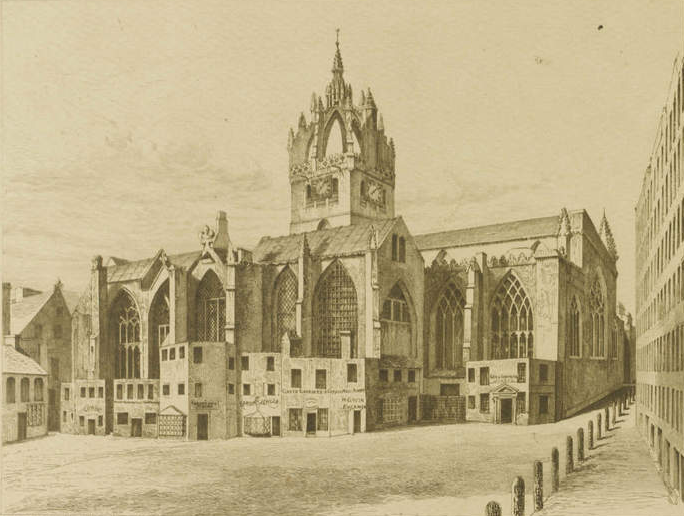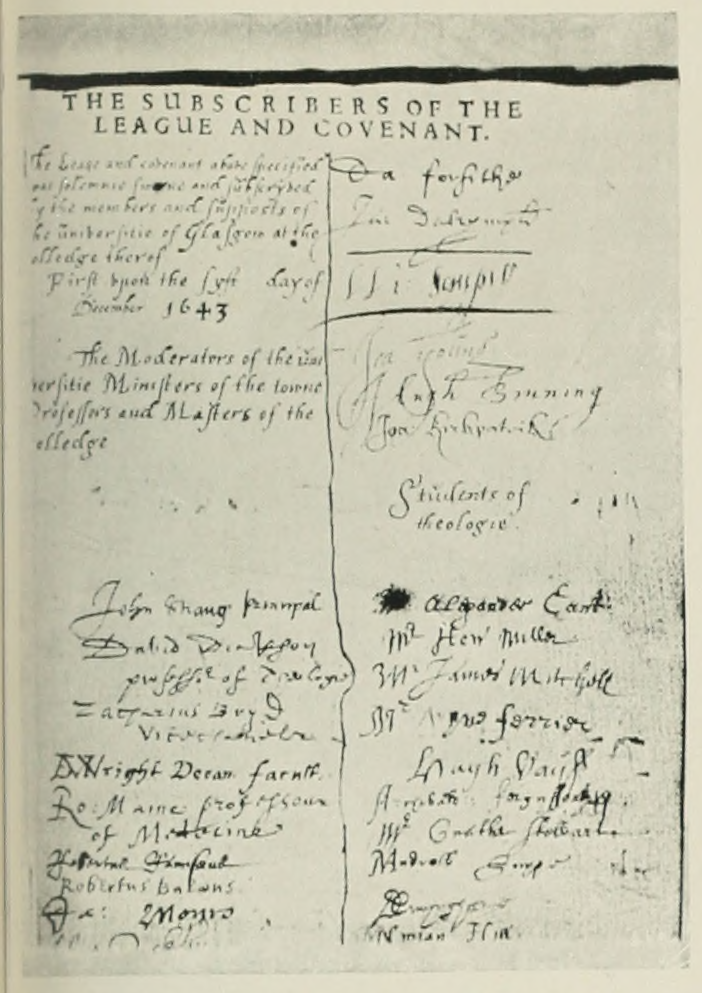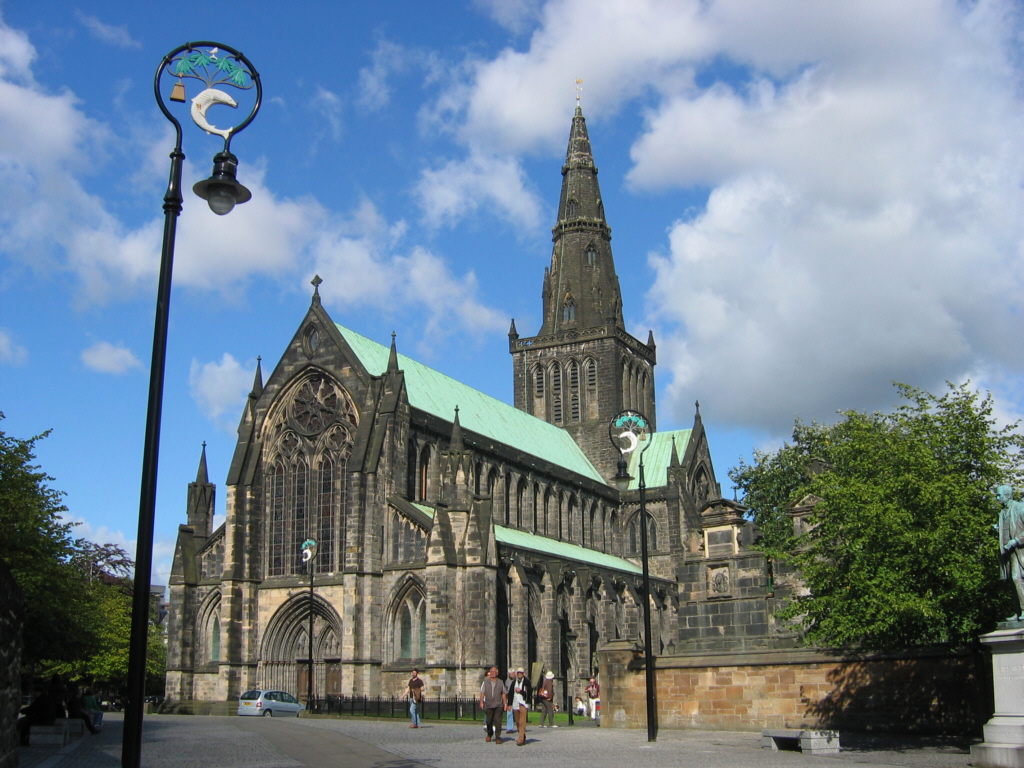|
David Fletcher (bishop)
David Fletcher (c.1607–1665) was a 17th-century senior clergyman in the Church of Scotland. Life He was the second son of Andrew Fletcher a Dundee merchant, related to the Fletchers of Innerpeffer. His brother Sir John Fletcher was Lord Advocate of Scotland from 1661 to 1664. His date of birth is unclear but he graduated MA from St Andrews University in 1625. In 1635 Edinburgh town council elected him as minister in second charge in the Old Kirk, St Giles (then split into four sections, with two ministers per section). He was deposed from this post in January 1639 both for declining the previous Assembly in Glasgow and for reading and defending the Scottish Book of Common Prayer but was allowed to return to his post in August 1639. In 1641 he translated From St Giles to Melrose. In 1662 he was consecrated by Archbishop Andrew Fairfoul at Glasgow Cathedral as Bishop of Argyll. The position as Bishop permitted Fletcher a place in the Scottish Parliament. He died in March ... [...More Info...] [...Related Items...] OR: [Wikipedia] [Google] [Baidu] |
Church Of Scotland
The Church of Scotland ( sco, The Kirk o Scotland; gd, Eaglais na h-Alba) is the national church in Scotland. The Church of Scotland was principally shaped by John Knox, in the Scottish Reformation, Reformation of 1560, when it split from the Catholic Church and established itself as a church in the reformed tradition. The church is Calvinist Presbyterian, having no head of faith or leadership group and believing that God invited the church's adherents to worship Jesus. The annual meeting of its general assembly is chaired by the Moderator of the General Assembly of the Church of Scotland. The Church of Scotland celebrates two sacraments, Baptism and the Lord's Supper in Reformed theology, Lord's Supper, as well as five other Rite (Christianity), rites, such as Confirmation and Christian views on marriage, Matrimony. The church adheres to the Bible and the Westminster Confession of Faith, and is a member of the World Communion of Reformed Churches. History Presbyterian tra ... [...More Info...] [...Related Items...] OR: [Wikipedia] [Google] [Baidu] |
Andrew Fairfoul
Andrew Fairfoul (1610–7 November 1663) was the first post-Restoration Archbishop of Glasgow, from 1661 until his death in November 1663. He became Chancellor of the University of Glasgow after his consecration as Archbishop. Life Fairfoul was born in Anstruther the son of John Fairfoul a prominent minister of the Church of Scotland who relocated to Dunfermline in August 1610. He studied at the University of St Andrews. He became chaplain to the Earl of Rothes. He was minister of Leslie before translating to North Leith Parish Church in 1636 (being formally presented by King Charles I in 1641). In 1652 he moved to be minister of Duns.Fasti Ecclesiastae Scoticana by Hew Scott He was nominated for the Archbishopric by King Charles II and consecrated in London on 15 December 1661. On 19 April 1662 Fairfoul made his public entry into Glasgow accompanied by the Earl of Glencairn, the Lord Chancellor of Scotland who was his predecessor as chancellor of the university. Th ... [...More Info...] [...Related Items...] OR: [Wikipedia] [Google] [Baidu] |
Ministers Of St Giles' Cathedral ''
{{disambiguation ...
Minister may refer to: * Minister (Christianity), a Christian cleric ** Minister (Catholic Church) * Minister (government), a member of government who heads a ministry (government department) ** Minister without portfolio, a member of government with the rank of a normal minister but who doesn't head a ministry ** Shadow minister, a member of a Shadow Cabinet of the opposition ** Minister (Austria) * Minister (diplomacy), the rank of diplomat directly below ambassador * Ministerialis, a member of a noble class in the Holy Roman Empire * ''The Minister'', a 2011 French-Belgian film directed by Pierre Schöller See also *Ministry (other) *Minster (other) *''Yes Minister ''Yes Minister'' is a British political satire sitcom written by Antony Jay and Jonathan Lynn. Comprising three seven-episode series, it was first transmitted on BBC2 from 1980 to 1984. A sequel, ''Yes, Prime Minister'', ran for 16 episodes fro ... [...More Info...] [...Related Items...] OR: [Wikipedia] [Google] [Baidu] |
1665 Deaths
Events January–March * January 5 – The '' Journal des sçavans'' begins publication of the first scientific journal in France. * February 15 – Molière's comedy ''Dom Juan ou le Festin de pierre'', based on the Spanish legend of the womanizer Don Juan Tenorio and Tirso de Molina's Spanish play '' El burlador de Sevilla y convidado de piedra'', premieres in Paris at the Théâtre du Palais-Royal''. * February 21 – In India, Shivaji Bhonsale of the Maratha Empire captures the English East India Company's trading post at Sadashivgad (now located in the Indian state of Karnataka). * February – In England, Dr. Richard Lower performs the first blood transfusion between animals. According to his account to the Royal Society journal ''Philosophical Transactions'' in December, Dr. Lower "towards the end of February... selected one dog of medium size, opened its jugular vein, and drew off blood, until its strength was nearly gone. Then, to ... [...More Info...] [...Related Items...] OR: [Wikipedia] [Google] [Baidu] |
Henry Home, Lord Kames
Henry Home, Lord Kames (169627 December 1782) was a Scottish writer, philosopher, advocate, judge, and agricultural improver. A central figure of the Scottish Enlightenment, a founding member of the Philosophical Society of Edinburgh, and active in the Select Society, he acted as patron to some of the most influential thinkers of the Scottish Enlightenment, including the philosopher David Hume, the economist Adam Smith, the writer James Boswell, the chemical philosopher William Cullen, and the naturalist John Walker. Biography He was born at Kames House, between Eccles and Birgham, Berwickshire, son of George Home of Kames House. He was educated at home by a private tutor until the age of 16. In 1712 he was apprenticed as a lawyer under a Writer to the Signet in Edinburgh, was called to the Scottish bar as an advocate bar in 1724. He soon acquired reputation by a number of publications on the civil and Scottish law, and was one of the leaders of the Scottish Enlighten ... [...More Info...] [...Related Items...] OR: [Wikipedia] [Google] [Baidu] |
Glasgow University
, image = UofG Coat of Arms.png , image_size = 150px , caption = Coat of arms Flag , latin_name = Universitas Glasguensis , motto = la, Via, Veritas, Vita , mottoeng = The Way, The Truth, The Life , established = , type = Public research university Ancient university , endowment = £225.2 million , budget = £809.4 million , rector = Rita Rae, Lady Rae , chancellor = Dame Katherine Grainger , principal = Sir Anton Muscatelli , academic_staff = 4,680 (2020) , administrative_staff = 4,003 , students = () , undergrad = () , postgrad = () , city = Glasgow , country = Scotland, UK , colours = , website = , logo ... [...More Info...] [...Related Items...] OR: [Wikipedia] [Google] [Baidu] |
John Strang
John Strang (1584–1654) was a Scottish minister and Principal of Glasgow University. He was a signator to the National Covenant of 1638. Life He was born at Irvine, Ayrshire in 1584. His father, William Strang (1547–1588), minister of Irvine, belonged to the family of Strang of Balcaskie in Fife; and his mother Agnes was sister of Alexander Borthwick, 'portioner' of Nether Lenagher, Midlothian. On William's death in 1588, his mother married Rev Robert Wilkie (d. 1601), minister of Kilmarnock, and young Strang received his early education at the grammar school there, Zachary Boyd being one of his schoolfellows. About the age of twelve he was sent to the University of St. Andrews, and placed under the care of Principal Robert Wilkie, a relative of his stepfather. He graduated M.A. four years afterwards, and subsequently became one of the regents of St. Leonard's College. He was licensed to preach as a Church of Scotland minister by the Presbytery of St Andrews and in April ... [...More Info...] [...Related Items...] OR: [Wikipedia] [Google] [Baidu] |
Scottish Parliament
The Scottish Parliament ( gd, Pàrlamaid na h-Alba ; sco, Scots Pairlament) is the devolved, unicameral legislature of Scotland. Located in the Holyrood area of the capital city, Edinburgh, it is frequently referred to by the metonym Holyrood. The Parliament is a democratically elected body comprising 129 members known as Members of the Scottish Parliament (MSPs), elected for five-year terms under the additional member system: 73 MSPs represent individual geographical constituencies elected by the plurality (first-past-the-post) system, while a further 56 are returned as list members from eight additional member regions. Each region elects seven party-list MSPs. Each region elects 15 to 17 MSPs in total. The most recent general election to the Parliament was held on 6 May 2021, with the Scottish National Party winning a plurality. The original Parliament of Scotland was the national legislature of the independent Kingdom of Scotland and existed from the early 13th ce ... [...More Info...] [...Related Items...] OR: [Wikipedia] [Google] [Baidu] |
Bishop Of Argyll
The Bishop of Argyll or Bishop of Lismore was the ecclesiastical head of the Diocese of Argyll, one of Scotland's 13 medieval bishoprics. It was created in 1200, when the western half of the territory of the Bishopric of Dunkeld was formed into the new diocese. The bishops were based at Lismore. The Bishopric of Argyll, like other Scottish bishoprics, passed into the keeping of the Scottish Episcopal Church after the Scottish Reformation. List of Bishops of Argyll In 1689, Episcopacy was permanently abolished in the Scottish Church. The line of bishops continued within the Scottish Episcopal Church The Scottish Episcopal Church ( gd, Eaglais Easbaigeach na h-Alba; sco, Scots Episcopal(ian) Kirk) is the ecclesiastical province of the Anglican Communion in Scotland. A continuation of the Church of Scotland as intended by King James VI, and ..., where the title was often combined with others. In 1847, Alexander Ewing became the first to bear the title Bishop of Argyll and t ... [...More Info...] [...Related Items...] OR: [Wikipedia] [Google] [Baidu] |
Glasgow Cathedral
Glasgow Cathedral ( gd, Cathair-eaglais Ghlaschu) is a parish church of the Church of Scotland in Glasgow, Scotland. It is the oldest cathedral in mainland Scotland and the oldest building in Glasgow. The cathedral was the seat of the Archbishop of Glasgow, and the mother church of the Archdiocese of Glasgow and the Province of Glasgow, until the Scottish Reformation in the 16th century. Glasgow Cathedral and St Magnus Cathedral in Orkney are the only medieval cathedrals in Scotland to have survived the Reformation virtually intact. The medieval Bishop's Castle, Glasgow, Bishop's Castle stood to the west of the cathedral until the 18th century. The cathedral is dedicated to Saint Mungo, the patron saint of Glasgow, whose tomb lies at the centre of the building's Lower Church. The first stone cathedral was dedicated in 1136, in the presence of David I of Scotland, David I. Fragments of this building have been found beneath the structure of the present cathedral, which was dedicate ... [...More Info...] [...Related Items...] OR: [Wikipedia] [Google] [Baidu] |
Melrose, Scottish Borders
Melrose ( gd, Maolros, "bald moor") is a small town and civil parish in the Scottish Borders, historically in Roxburghshire. It lies within the Eildon committee area of Scottish Borders Council. History The original Melrose was ''Mailros'', meaning "the bare peninsula" in Old Welsh or Brythonic. This referred to a neck of land by the River Tweed several miles east of the present town, where in the 6th century a monastery was founded associated with St Cuthbert. It was recorded by Bede, and also in the Anglo-Saxon Chronicle with the name ''Magilros''. This monastery and settlement, later known as "Old Melrose", were long abandoned by the 12th century. King David I of Scotland took the throne in 1124, and sought to create a new Cistercian monastery on that site; however the monks preferred a site further west called "Fordel". So the monastery now known as Melrose Abbey was founded there in 1136, and the town of Melrose grew up on its present site around it. In the late Middle ... [...More Info...] [...Related Items...] OR: [Wikipedia] [Google] [Baidu] |
St Giles' From Parliament Square
ST, St, or St. may refer to: Arts and entertainment * Stanza, in poetry * Suicidal Tendencies, an American heavy metal/hardcore punk band * Star Trek, a science-fiction media franchise * Summa Theologica, a compendium of Catholic philosophy and theology by St. Thomas Aquinas * St or St., abbreviation of "State", especially in the name of a college or university Businesses and organizations Transportation * Germania (airline) (IATA airline designator ST) * Maharashtra State Road Transport Corporation, abbreviated as State Transport * Sound Transit, Central Puget Sound Regional Transit Authority, Washington state, US * Springfield Terminal Railway (Vermont) (railroad reporting mark ST) * Suffolk County Transit, or Suffolk Transit, the bus system serving Suffolk County, New York Other businesses and organizations * Statstjänstemannaförbundet, or Swedish Union of Civil Servants, a trade union * The Secret Team, an alleged covert alliance between the CIA and American industry ... [...More Info...] [...Related Items...] OR: [Wikipedia] [Google] [Baidu] |





